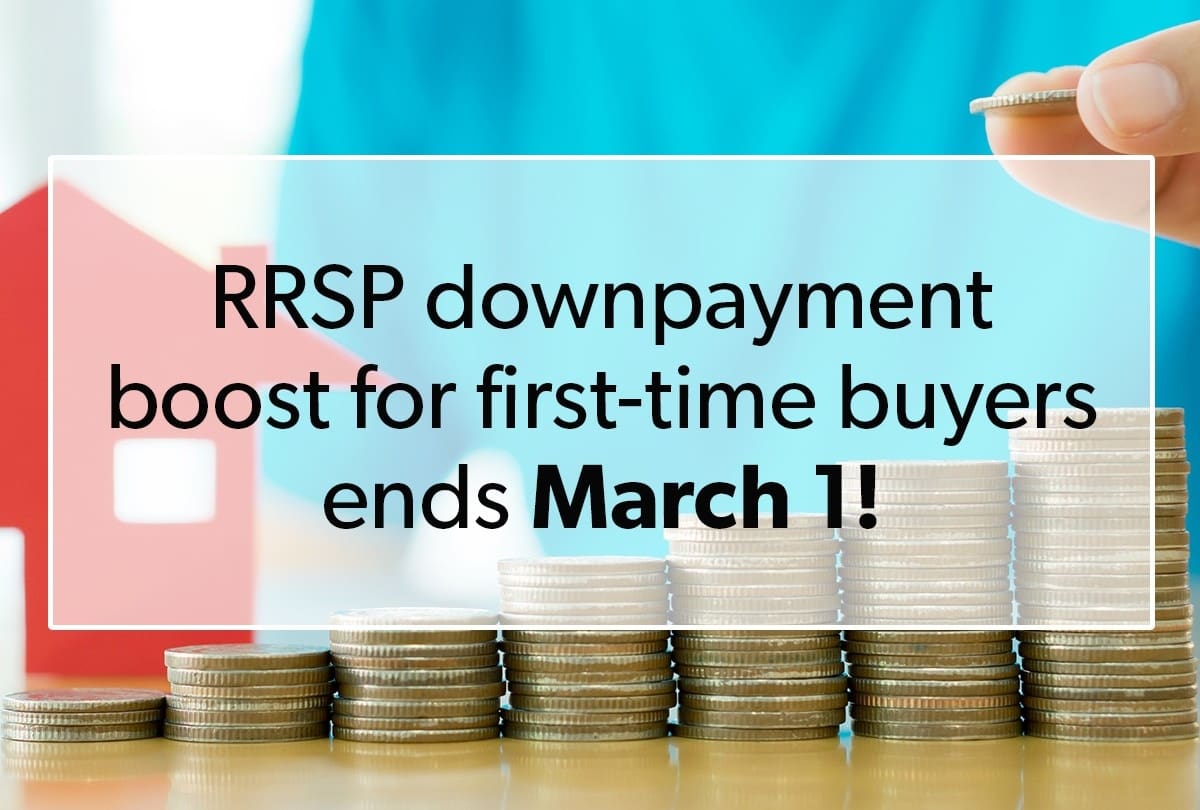It’s RRSP Season.
Thinking of buying in 2022? Use your RRSP to boost your down payment
There are some deadlines you really don’t want to miss. Make an RRSP contribution for the 2021 tax year by March 1, 2022.
Step 1 – Shrink your tax bill
Yes, that’s right. One of the biggest benefits of saving in an RRSP is getting to claim a tax deduction for the full amount you contribute. Let’s say you put $10,000 into your RRSP on or before March 1, 2022. If your tax rate is 40%, you’d save up to $4,000 on your income taxes. As long as you have enough RRSP contribution room you won’t be penalized.
If your employer has collected your income tax in advance, when you file your taxes in April, you’d have reduced taxable income, and then would receive a refund from the CRA of $4,000 (using the example above), that could be added to your down payment savings!
Step 2 – Use your RRSP for a down payment on a home
With the federal government’s Home Buyers’ Plan (HBP), “first-time” buyers can use up to $35,000 of their RRSP savings ($70,000 for a couple) to help finance their downpayment.
- You can only borrow to the $35,000 limit per person, so you don’t want to exceed this amount, or contribute if you already have an RRSP of this size as you won’t be able to pull the additional funds out.
- The other thing to remember is that funds must be in your RRSP for 90 days before you can withdraw the money for your downpayment, so make sure that your closing will be at least 90 days after your date of contribution.
- The HBP is essentially a loan to yourself, so you have to return the borrowed funds to your RRSP over the following 15 years, but you do get 2 years before you have to start repaying the funds. So if you borrow the full $35,000, you’ll need to pay back $2,692.31 in years 3 – 15, and these repayments don’t reduce your taxable income during those years.
Remember you need to contribute before the March 1st deadline to get this boost for spring!
Why is this important to you if you are a home owner?
The deadline to contribute to your RRSP this year is March 1. Your home may be the perfect tool to pay yourself first and grow your net worth.
Many homeowners feel caught between competing financial priorities – paying down their mortgage and keeping up with monthly bills often means retirement savings take a back seat. With the right plan in place, it may be possible to simplify your debt, reduce interest costs, and save for retirement.
In 2021 the average house price in Canada increased almost 18%. Tapping into the unused equity in your home is an effective way to save money and grow your net worth. Here are a few ways to make this happen:
- If there is enough equity in your home, you can borrow to invest in your RRSP if you have the contribution room.
- Consolidate your high-interest debt such as credit cards, car loans and other consumer obligations and roll it into a low-interest mortgage. Very often, this strategy has a dramatic positive effect on monthly cashflow, and by reducing the number of payments you have to manage each month, makes life simpler – and who doesn’t love that?
- Combine your mortgage refinance with a pre-authorized monthly contribution to your RRSP, and watch your retirement savings grow! For instance, let’s say you saved $750
a month by refinancing your mortgage and paying out other debt. If you took $500 of that $750 and invested it each month, that’s $6,000 closer to your goal each year. If you invest $6,000 each year for 20 years, with a rate of return of 4%, adjusted for inflation*, you’ll have $193,385 saved for retirement! And by setting up a monthly contribution schedule, by the time the RRSP contribution deadline comes along next year, you’ll have a sizeable contribution already.
For some homeowners, this is a great way to save more and pay less – not only can you make your monthly debt payment smaller and save on interest, you also save for retirement—all in one! Manage your debt, save more for retirement, and enjoy a new financial life. I’d love to help you crunch some numbers and assess your situation.
*Assuming an inflation rate of 2% per year.
Overview
Subscribe to begin.
Join 7.5k+ subscribers and get tips, strategies and market updates every other Thursday morning.







